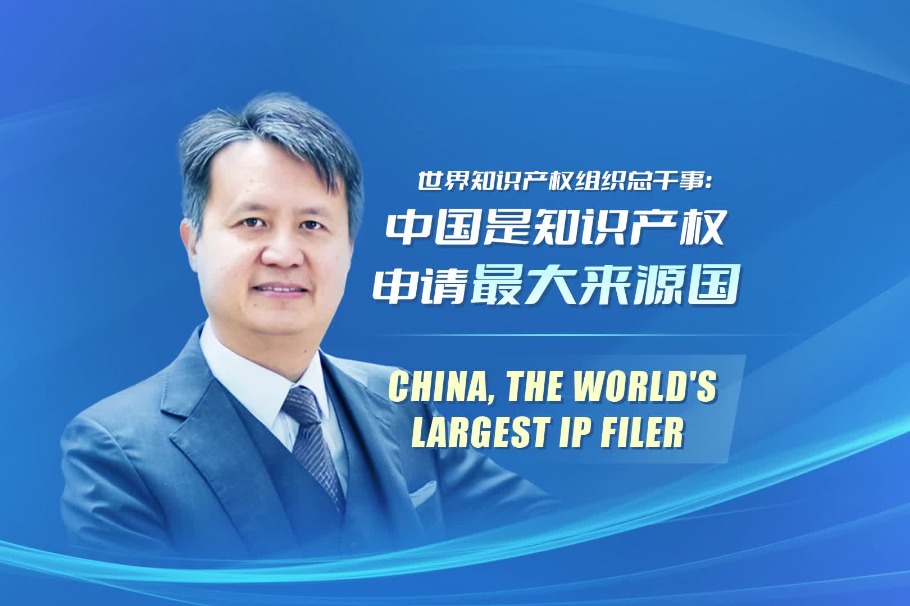Innovation should lead high-tech growth
By Sui Jigang | China Daily | Updated: 2020-11-30 07:44

Scientific and technological innovation can propel economic and social development. And since the communiqué issued after the conclusion of the Fifth Plenary Session of the 19th Communist Party of China Central Committee in October has emphasized that scientific and technological innovation is pivotal to the 14th Five-Year Plan (2021-25), innovation is expected to play a profound role in the fourth industrial revolution in China.
With the world facing multiple challenges, from the novel coronavirus pandemic to the rise of unilateralism and protectionism and global economic downturn, enhancing innovation capability has become an important task for China to realize high-quality development. The 14th Five-Year Plan accords high priority to innovation and self-reliance in science and technology in the country's modernization drive, reflecting the importance of innovation in different fields.
The fourth industrial revolution is evolving differently in different countries, and different factors are influencing the global competition pattern. Information and communications technology (ICT) is the driving force of socioeconomic development with semiconductors at the core.
A country should not only have a competent pool of ICT talents but also be self-sufficient in hardware and electronic components, including semiconductors and chips, to become a leader in cutting-edge technology and compete in the global market. For example, the US Commerce Department's sanctions against Huawei have hindered the Chinese telecom giant's advancement in 5G technology, exposing the risks of heavy reliance on the high-tech imports, especially microchips and semiconductors from US companies. It's another matter that the US sanctions will also cause huge losses to the US enterprises supplying these products to Huawei.
The impacts of the additional tariffs the US has imposed on Chinese goods since March 2018 and the US sanctions on different Chinese industries, including on Huawei and ZTE, have exposed the bottlenecks and loopholes in the country's scientific and research sector. Also, despite having the second-largest R&D budget in the world and accounting for the highest number of patent applications, China still lags behind developed countries in terms of innovation capability and core technology.
And although China has the highest number of semiconductors and integrated circuits, 90 percent of its products rely on imports-data show China imported semiconductors worth $305.5 billion, which accounted for 2.2 percent of its GDP.
The weakness of the chip-making sector is fettering its innovation capability. So China should introduce an innovation-driven strategy to enhance its innovation capability.
According to (Intel owner Gordon) Moore's Law, the number of transistors on a microchip doubles every two years. To survive and excel in the microchip and related sectors, the Chinese chip industry has no choice but to improve its productivity and competitiveness.
First, China should draw up a long-term and advanced plan to become self-reliant in computer equipment and electronic components. Although it has made remarkable achievements in many fields including science and technology, there is still a large gap between China and the developed countries when it comes to chip development and manufacturing. Hence, China should increase investment to expedite targeted R&D in high-tech, especially chips and semiconductors.
Second, China should ensure its R&D results are applicable to manufacturing and other industries, and aimed at making China self-dependent in science and technology. Since the continuous flow of knowledge, talents, information, funding and technologies among countries has made cooperation necessary to promote innovation, China should deepen cooperation and collaboration with other countries and use all its resources to enhance its innovation capability.
Third, scientific and technological enterprises should create an atmosphere conducive to innovation by, for example, increasing funding for basic research, and forming groups comprising universities, research institutions and entrepreneurs to promote innovation. They should also participate in global innovation networks, so as to sharpen their competitive edge.
And fourth, the authorities should devise an overall plan with long-term national strategic and security goals, and boost advanced manufacturing and new material production.
They should also take measures to boost the domestic market, and set up mechanisms to facilitate the application of R&D results to both the production and services sectors. After all, R&D is all about taking what you have and researching and/or developing them and using the outcome to enhance your capabilities and be more efficient-and by extension, lay the foundation for further application of R&D results to develop all types of products including semiconductors and chips.
Moreover, since China is the world's largest semiconductor market, and considering that its demand for chips is very high, as they are extensively used in emerging technologies such as 5G, artificial intelligence and internet of things, domestic enterprises should use their advantages to enhance their innovation and manufacturing capability.
The author is a researcher at the Institutes of Science and Development, Chinese Academy of Sciences. The views don't necessarily reflect those of China Daily.
























